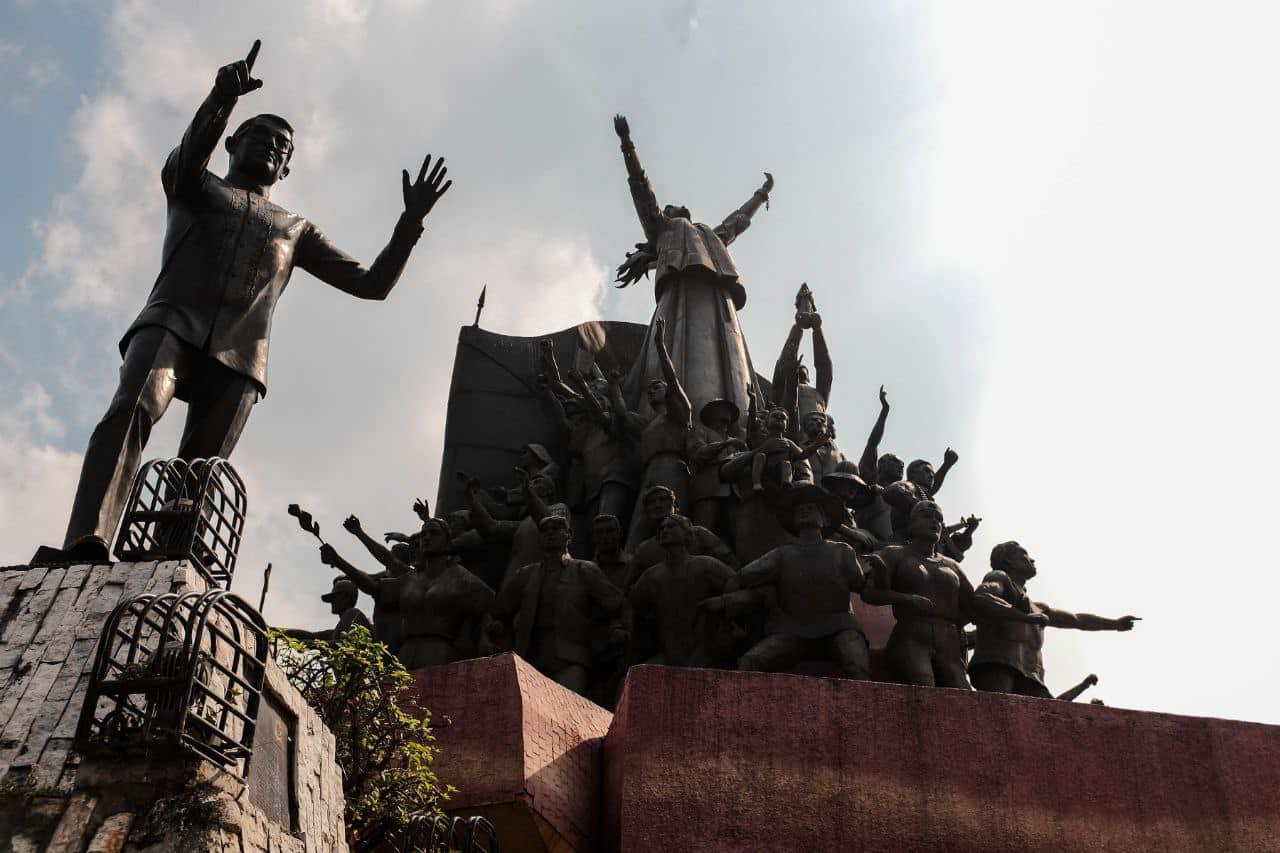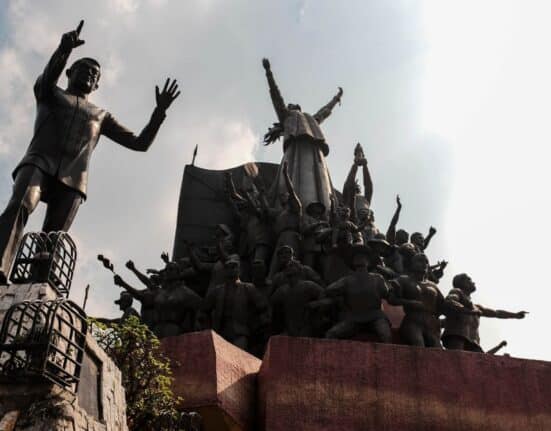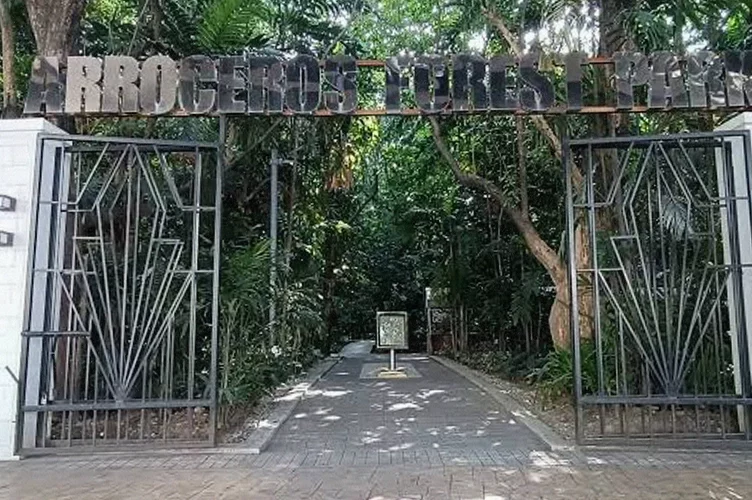TODAY marks the first time that the administration of President Marcos Jr. will commemorate the anniversary of the 1986 EDSA People Power Revolution, a mass uprising that ousted his father and namesake from Malacañang following years of oppression under his martial rule.
The official celebration of the revolution is on February 25, Saturday, and it was earlier declared a special non-working day throughout the country.
But this year, Marcos declared February 24 a special non-working day.
In his tweet, the President said this is part of the government’s efforts to push the “holiday economics” to help the country rebound from the effects of the pandemic.
“Nawa’y ang panahong ito’y ating gamitin upang masuportahan ang ating lokal na turismo at ang sari-saring industriyang kakambal nito,” he wrote.
Ating idineklarang Non-Working Holiday ang February 24, 2023, Biyernes.
— Bongbong Marcos (@bongbongmarcos) February 23, 2023
Sa pagsulong natin ng holiday economics bilang pag-alalay sa ating pagbangon,
Under his Proclamation No. 167, signed by Executive Secretary Lucas Bersamin, Marcos said moving the “celebration of the event” a day earlier may be done “provided that the historical significance of EDSA People Power Revolution Anniversary is maintained.”
Many eyes are expected to be on the President during the People Power anniversary, given its adverse impact on his family, who has also been accused of trying to whitewash history.
Critics say Marcos’ run for the presidency in last year’s election is an attempt to rehabilitate his family’s name and sweep the atrocities committed during the regime of the late dictator Ferdinand Marcos Sr. under the rug.
But there are efforts from sectors bent on protecting history and preserving records so that future generations will know the truth.
What sparked the 1986 EDSA People Power revolution?
By February 1986, Marcos Sr. had been in power for two decades, aided by his declaration of martial law in 1972 that allowed him to keep an iron grip on the country.
This period was marked by the disappearance, torture, and abuses of protesters and dissenters, as well as corruption and the plunder of the nation’s coffers. Assets and businesses of rivals were seized, and most media were muzzled.
But there were officials who dared to stand up to the dictatorship. One of them was Sen. Benigno Aquino Jr., who was also jailed because of his political views.
It was Aquino’s assassination in 1983, amid growing discontent, that further ignited the protests against Marcos Sr.
It thrust Aquino’s widow Corazon Aquino into prominence, and she would later run against Marcos Sr. in the February 1986 snap election.
Marcos Sr. was declared the winner of the polls marred by massive cheating, sparking protests.
The EDSA revolution was not a one-day affair
On February 22, then Defense Minister Juan Ponce Enrile, along with Lt. Gen. Fidel Ramos, announced his defection from the Marcos camp after authorities uncovered a coup plot against the administration.
Manila Archbishop Jaime Cardinal Sin called on the public to support the military officials, drawing crowds to Camp Aguinaldo where they were holed up.
Hundreds of thousands of people came in the next three days, massing up on EDSA. They declared their support for the rebel soldiers and called on Marcos Sr. to step down.
Marcos Sr. ordered the military to disperse the crowd, but many of the officers and troops refused to attack civilians and defected instead.
On February 25, two inaugurations took place. Aquino took her oath as President in Club Filipino, while Marcos Sr. was inaugurated in Malacañang.
But the writing was on the wall. Amid continued protests, Marcos Sr. and his family fled the palace, flying to Hawaii where they stayed in exile for several years.
Aquino took over and declared a revolutionary government. She ordered the drafting of a new constitution, with additional safeguards against abuse of power. It was ratified in 1987.
SUGGESTED STORIES:
Arroceros Park, 5 degrees cooler than Manila Heat index
INSIDE the ‘Last Lung of Manila’, Arroceros Park recorded 5.
A Swiftie half? Fans flock to London pub namechecked by US star
LONDON, United Kingdom: “The Black Dog” was a quiet London.
Here we go again: JK Labajo gets ‘deja vu’ after a call to support rumored
JUAN Karlos “JK” Labajo seemed to experience deja vu after.
Why the People Power Revolution is significant
The ouster of Marcos Sr. in a peaceful uprising was hailed all over the world.
It was praised for showing that people can fight for democracy and remove an oppressive leader through bloodless means.
Several other countries later had their own non-violent regime changes.
How the Philippines is preserving the memory of EDSA
The Philippines is keeping the memory of the 1986 revolution in the public consciousness through the observance of its anniversary every February 25.
There are also monuments to mark the event.
One is the People Power Monument along EDSA, which honors the people who joined the protests against the regime. The top tier of the monument features a woman with arms raised, and with unchained shackles on her wrist to represent freedom.
Another is the EDSA Shrine, or the Shrine of Mary, Queen of Peace. It is a memorial of the revolution and was an idea of Manila Archbishop Jaime Cardinal Sin.
The third is the Bantayog ng mga Bayani along Quezon Avenue in Quezon City. It honors those who fought against the Marcos dictatorship.
The Philippine government has also officially recognized the abuses committed during martial law with the enactment of Republic Act 10368 or the Human Rights Victims Reparation and Recognition Act of 2013.
It provides compensation to those who suffered abuses during martial law, with the amount taken from the funds recovered from the Marcoses’ ill-gotten wealth.
The law also provides for the establishment of a memorial, museum or library in honor and memory of the victims of human rights violations.
The Freedom Memorial Museum, which will feature exhibits on martial law, will be built at the University of the Philippines Diliman.
All these are part of efforts to ensure that people will never forget the past.












